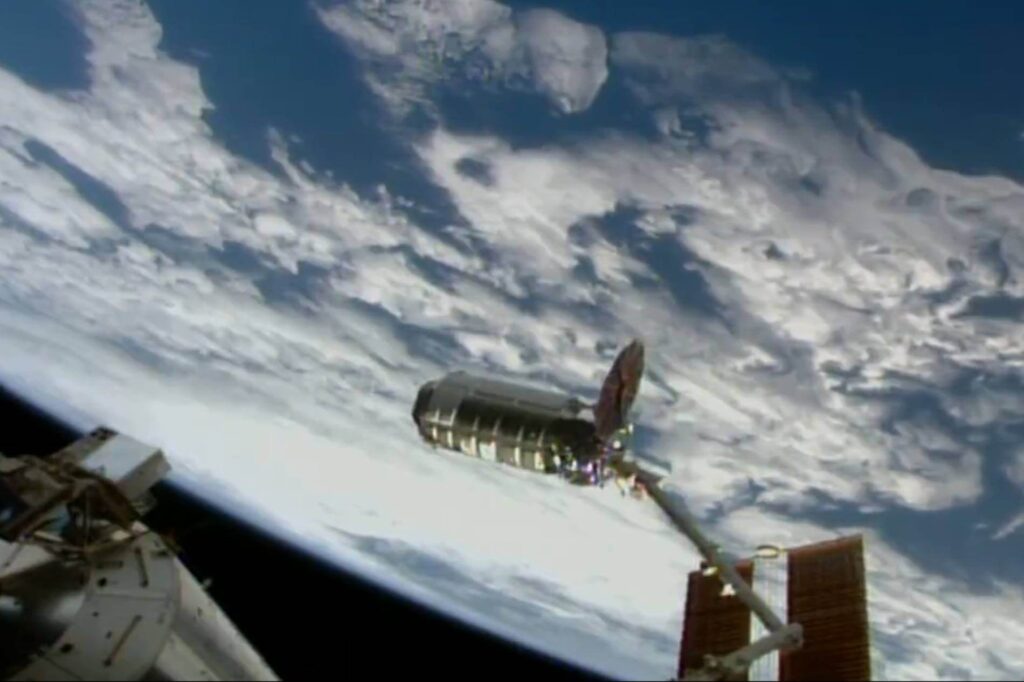Northrop Grumman’s Cygnus spacecraft has successfully arrived at the International Space Station (ISS) three days after it was launched, the manufacturer and NASA have both reported.
Despite the spacecraft’s solar array malfunctioning after the launch, Cygnus was grabbed by the ISS’s robotic hand and pulled in, delivering 3,748 kilograms (8,265 pounds) of equipment and supplies.
The spacecraft was launched on November 7, 2022, on an Antares rocket from Mid-Atlantic Regional Spaceport, Virginia, US.
The spacecraft’s array of solar batteries should have been deployed around three hours after the launch, providing the vehicle with electricity on its way to rendezvous with the ISS.
Piloted by @AstroDuke the robotic arm of the @Space_Station has successfully captured the Cygnus spacecraft carrying dozens of new scientific experiments and food. Next step: spacecraft installation to the Unity module’s Earth-facing port. pic.twitter.com/O0mAg4Ob8o
— NASA (@NASA) November 9, 2022
However, just one of its two circular arrays deployed.
“During a rocket stage separation event, debris from an Antares acoustic blanket became lodged in one of the Cygnus solar array mechanisms, preventing it from opening,” vice president and general manager of Tactical Space Systems at Northrop Grumman Cyrus Dhalla is quoted as saying in the company’s press release.
Despite the difficulties, NASA and Northrop Grumman’s teams managed to successfully rendezvous with the space station and berth the aircraft. It was the 19th launch of the Cygnus and its 18th successful one.
Developed in the early 2000s, Cygnus is a cargo spacecraft designed to resupply the ISS and replace the Space Shuttle and the Russian Soyuz capsule in this role.
What differentiates the latest launches of Cygnus is the shift in the spacecraft’s role: with Russia’s space agency Roscosmos announcing plans to pull out of ISS program and threatening to cut off Soyuz missions, Sygnus became the primary option for periodically boosting the station.
The first successful test of such a mission was performed in June 2022, when the Cygnus conducted a 301-second-long burn of its engines while attached to the ISS, giving the station an altitude boost and ensuring that it remains in orbit.
According to Northrop Grumman, the latest Cygnus mission can provide the ISS with a boost if such a measure is deemed necessary. The spacecraft will remain with the station for three months, before detaching and burning out in the atmosphere.

